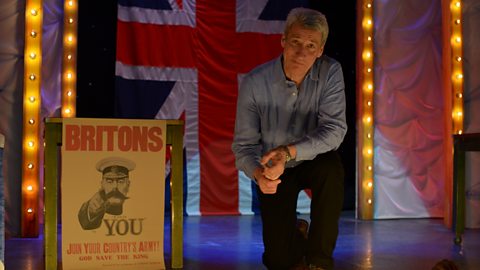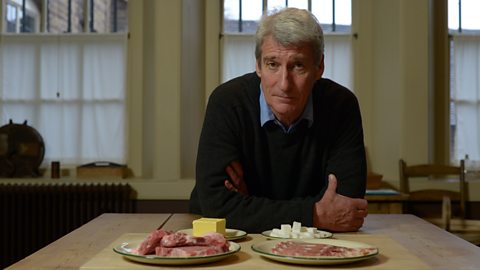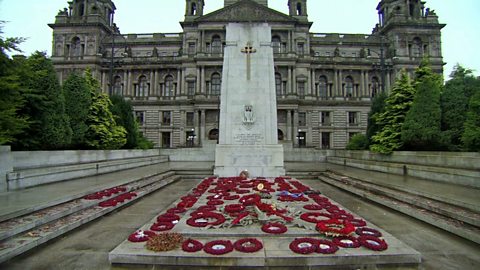Video summary
Violet Muers tells Jeremy Paxman her eye witness account of living through the surprise German naval bombardment of Hartlepool in 1914.
She describes the panic, fear and injuries the bombing caused on December 16th 1914, when she was 7 years old.
It was one of several bombardments of coastal towns in the North-East of England that day, and the first attack on British shores since 1066.
At the time they believed the Germans were invading. We see an alarm clock hit by shrapnel in the attack, along with photos of damaged buildings and newspaper reports showing children killed in the attack.
Paxman explains the effects of a falling shell, and how they caused so much damage. It demonstrates how British civilians were rapidly drawn into the First World War.
Teacher viewing recommended prior to use in class.
Teacher Notes
Key Stage 3:A hot seat technique could be used in class, where the group ask relevant questions of one person in the role of a witness to the bombardment. Then others occupy the hot seat to answer different questions about the incident. The target is to develop appropriate investigative and questioning skills for a specific purpose.
Key Stage 4:Use this clip to focus on developing evidence skills. The class consider the usefulness and limitations of the witness recollections, listing ideas for both sides. This may be developed to discuss the issues of reliability of memories from a very long time ago. The need to balance and corroborate can also be developed based on the example._
National 5 / Higher:The German naval bombardment could be used to introduce the German strategy of attacking British civilians. This could lead into study of the impact of zeppelin raids in Scotland - which reached as far as Edinburgh and Leigh. Students could discuss the impact of eyewitness accounts of the war. What do original memories add to our knowledge and assessment of historical events. How can these be corroborated and compared to give a broader picture?
This clip will be relevant for teaching History. This topic appears in at KS3 in England, Wales and Northern Ireland and OCR, Edexcel, AQA and WJEC/Eduqas GCSE/KS4 in England and Wales and CCEA GCSE in Northern Ireland. It also appears in National 5 and Higher in Scotland.
How Britain declared war in WW1. video
Jeremy Paxman explores the declaration of war after Germany invaded Belgium in 1914.

Your country needs you! video
Jeremy Paxman explains Lord Kitchener's iconic recruitment PR campaign of WW1.

Crushing defeat in the first battle of WW1. video
Jeremy Paxman explores how Britain suffered defeat at the Battle of Mons.

The ΒιΆΉΤΌΕΔ Front. video
Jeremy Paxman explains how German u-boats crippled the country and led to rationing and the ΒιΆΉΤΌΕΔ Front.

WW1 poetry and shell shock. video
Jeremy Paxman looks at the mental health problems suffered by poet Siegfried Sassoon and soldiers in the First World War.

Treating Indian soldiers at Brighton Pavilion. video
Jeremy Paxman explains how a former royal residence became a hospital for injured soldiers in WW1.

The dangerous jobs of women in WW1. video
How women entered the workforce and took up dangerous roles to support the war effort.

How the Britain turned the tide in 1918. video
How the British workforce, the ΒιΆΉΤΌΕΔ Front and the USA joined together to fight back against the German advance in 1918.

1918: the end of the war and Remembrance Day. video
Jeremy Paxman describes the end of the First World War.
